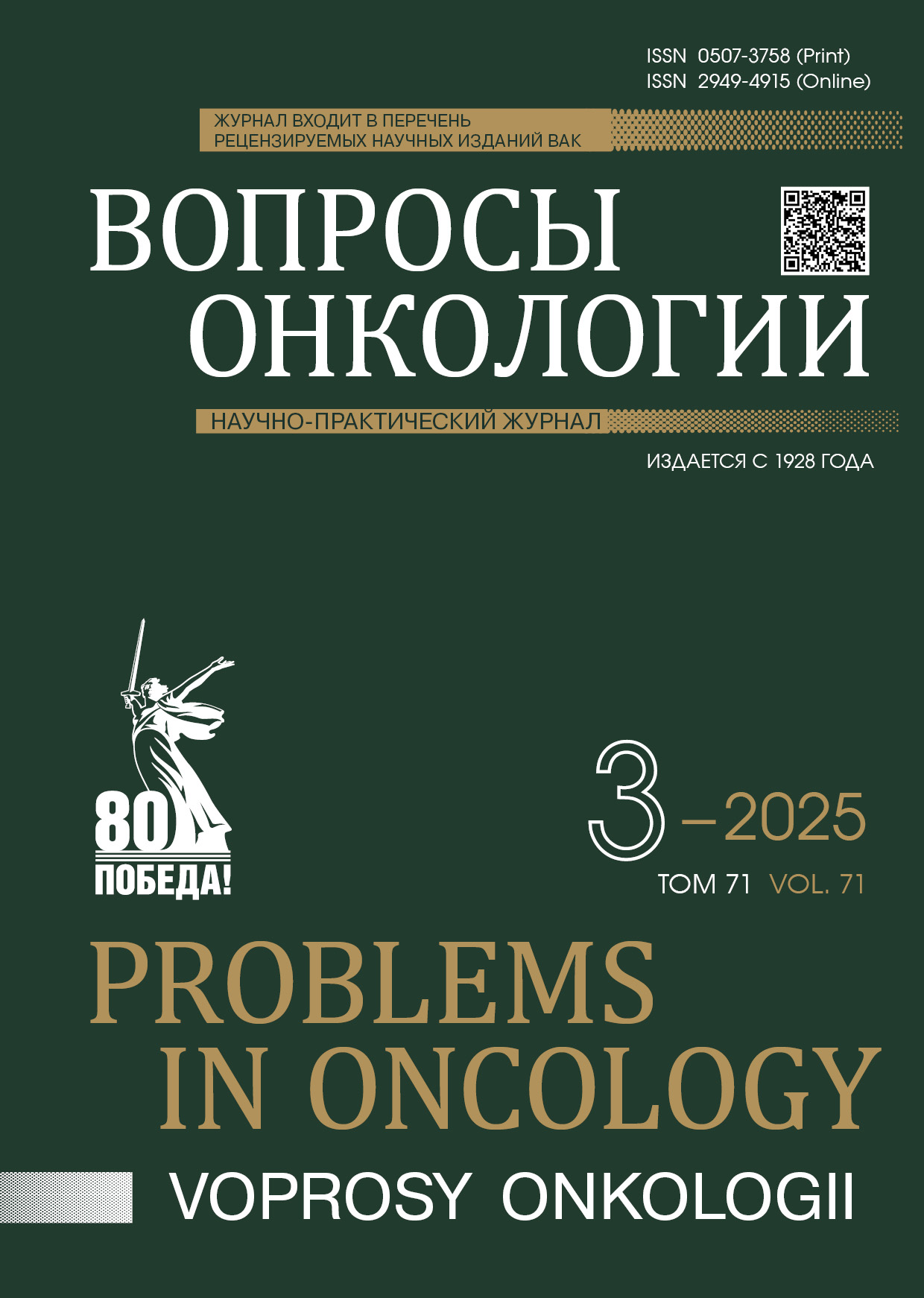Abstract
Introduction. Despite the recent trend towards less invasive surgical treatment for breast cancer, 25-35 % of patients still require a mastectomy. The increased demand for improved quality of life has made reconstructive surgeries, including those involving endoprostheses, especially relevant. The presence of foreign materials in the wound increases the risk of infectious complications during the postoperative period. This can have an adverse effect on the progression of the cancer.
Aim. To assess the incidence of infectious complications after reconstructive surgery involving an endoprosthesis in patients with breast cancer and to identify the main pathogens causing infection.
Materials and Methods. The article presents the results of a prospective randomized study comparing the effectiveness of standard short-term and prolonged antibiotic prophylaxis in reconstructive surgeries involving alloplastic materials in patients with breast cancer. The study was conducted at the Department of Breast Tumors in the Oncomammology Department at the N.N. Blokhin National Medical Research Center of Oncology. The incidence of surgical site infections (SSI) in the study groups was assessed, as well as the effect of seasonality on the risk of wound infection.
Results. The study involved 353 patients who underwent reconstructive mammary gland surgery using expanders or silicone implants. The overall incidence of SSI was 7.4 %. In the short-course antibiotic prophylaxis group, it was 9.5 %. In the prolonged antibiotic prophylaxis group, it was 5.4 % (p = 0.132). It should be noted that the majority of infectious complications occurred in the summer months (p < 0.001). Only between June and August were the differences in the incidence of infectious complications between the two antibiotic prophylaxis regimens statistically significant (p = 0.019). Staphylococcus aureus occupies a leading position (76 %) in the taxonomic structure of the identified SSI pathogens.
Conclusion. Our study shows that there is an increased risk of infectious complications after reconstructive surgery on the breast using alloplastic materials in hot weather. Prolonged administration of antibacterial drugs only shows greater effectiveness compared to a short, one-day course in summer.
References
Артамонова Е.В., Воротников И.К., Вышинская Г.В., et al. Онкомаммология. Под ред. В.А. Хайленко, Д.В. Комова. М.: МЕДпреcсинформ. 2015; 328.-ISBN: 978-5-00030-237-8. [Artamonova E.V., Vorotnikov I.K., Vyshinskaya G.V., et al. Oncomammology. Ed. by V.A. Khailenko, D.V. Komov. M.: MEDpressinform. 2015; 328.-ISBN: 978-5-00030-237-8 (In Rus)].
Bailey C.R., Ogbuagu O., Baltodano P.A., et al. Quality-of-life outcomes improve with nipple-sparing mastectomy and breast reconstruction. Plast Reconstr Surg. 2017; 140(2): 219-226.-DOI: 10.1097/PRS.0000000000003505.
Liu E.H., Tong M., Kim G.Y., et al. Antibiotic prophylaxis in alloplastic breast reconstruction: regimens and outcomes. Plast Surg (Oakv). 2022; 30(1): 25-31.-DOI: 10.1177/2292550321995730.
Long C., Sue G.R., Chattopadhyay A., et al. Critical evaluation of risk factors of infection following 2-stage implant-based breast reconstruction. Plast Reconstr Surg Glob Open. 2017; 5(7): e1386.-DOI: 10.1097/GOX.0000000000001386.
Monroig K., Ghosh K., Marquez J.E., et al. Do postoperative prophylactic antibiotics reduce highly virulent infections?: An analysis of 660 tissue expander breast reconstructions. Ann Plast Surg. 2020; 85 (S1 Suppl 1): S50-S53.-DOI: 10.1097/SAP.0000000000002325.
Szymankiewicz M., Nowikiewicz T., Biedka M. Significance of infections in implant loss after breast reconstruction in the course of breast cancer treatment. Pol J Microbiol. 2019; 68(3): 343-351.-DOI: 10.33073/pjm-2019-037.
Weichman K.E., Levine S.M., Wilson S.C., et al. Antibiotic selection for the treatment of infectious complications of implant-based breast reconstruction. Ann Plast Surg. 2013; 71(2): 140-3.-DOI: 10.1097/SAP.0b013e3182590924.
Min K., Jeong S.S., Han H.H., et al. Seasonal and temperature-associated effect on infection in implant-based breast reconstruction. Ann Plast Surg. 2022; 88(1): 32-37.-DOI: 10.1097/SAP.0000000000002732.
Lisa A.V.E., Zeneli F., Mazzucco M., et al. Microbiology of periprosthetic infections following implant-based breast reconstruction surgery: a multicentric retrospective study. Front Surg. 2024; 11: 1477023.-DOI: 10.3389/fsurg.2024.1477023.
Asaad M., Slovacek C., Mitchell D., et al. Implant-based breast reconstruction following infected device explantation: Is a second attempt worth it? Plast Reconstr Surg. 2022; 150(2): 247e-259e.-DOI: 10.1097/PRS.0000000000009289.

This work is licensed under a Creative Commons Attribution-NonCommercial-NoDerivatives 4.0 International License.
© АННМО «Вопросы онкологии», Copyright (c) 2025

